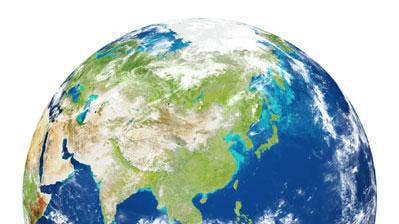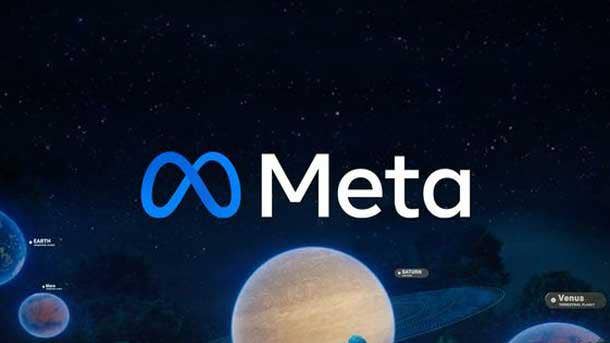Accenture CTO: Now Is The Time To ‘Stake Your Claim’ In The Metaverse
‘Every business is a digital business. That‘s the moment we’re in today with the metaverse. It is a different future going forward. It matters for every company in every part of what you do,’ says Accenture CTO Paul Daugherty.

The metaverse is something here now—not tomorrow—and it will impact every part of every business, said Accenture CTO Paul Daugherty.
“It is the time to stake your claim in the metaverse,” he said. “The exponential pace of technology change is going to continue, and the applicability to every part of what you do is going to continue.”
During a keynote address at the Dublin, Ireland-based solution provider’s Technology Vision event Wednesday, Daugherty highlighted in a what the metaverse is, the trends surrounding it, and the impact it will have.
“Every business is a digital business,” he said. “That‘s the moment we’re in today with the metaverse. It is a different future going forward. It matters for every company in every part of what you do.”
He identified the metaverse as the future of the internet that will enable new worlds to bridge virtual and real experiences, virtual and real identity, and places. Businesses will need to reimagine the possibilities because it‘s about charting a course, according to Daugherty.
“Start in a small and focused way that matters for your business. Then get ready to scale fast because this is coming at us fast, and you need the ability to do that very rapidly,” he said.
“There‘s a tremendous amount of hype around it,” he said. “It’s probably the most talked-about technology topic we’ve seen this decade. We‘re just getting started. The client interest that we’re seeing across industries has really been amazing. We really are talking about the future of the internet, the next evolution of the internet and creating these new opportunities.”
In his presentation, Daugherty outlined what the metaverse means for businesses today and how to craft strategies to take advantage of it.

The Continuum Of The Internet
The continuum is a way to expand the view of the metaverse and center on a definition that helps a business understand how to apply the metaverse, Daugherty said.
“Think about an annual report for a company,” he said. “You‘re reading the annual report, you may browse it on paper, you may click through and look at it online. But what if you could actually walk into the metaverse and into a meeting in the boardroom with the executives and hear from them, interact with them? Or you jump off to a store and see how the customers are reacting to products or go off into a factory and look at how [products are] being made?”
The metaverse creates more informational experiences, and it’s bleeding into all industries. Daugherty referenced Jamie Dimon, the CEO of JPMorgan Chase, who said the metaverse is a trillion-dollar opportunity for banking.
Last week the U.S. government issued an executive order on cryptocurrency, announcing a move toward a digital dollar that would operate in a similar way that cryptocurrencies work, creating a new financial foundation in which businesses can operate in the metaverse.
“What‘s happening here is really enabled by the future of the internet and how that’s enabling the metaverse,” he said.
And the metaverse is the next wave, the biggest wave, of the internet.
When you go back to the original internet, it was all about search and how you can find things,” he said. “The 2000s we moved into social networks and social across the internet—it created the ‘internet of people,’ so to speak.”
The 2010s brought mobility, 3G, 4G and the Internet of Things.
He characterized internet search as Web1, mobile data as Web2 and now we’re at Web3. Web3 has two key capabilities–the “internet of place” and the the “internet of ownership.”
“An internet of place is a way to create shared, collaborative experiences in the internet in a standard interoperable way,” he said. “It’s creating a place and doing that through the internet.”
The internet of ownership is even more profound, he said.
“It‘s enabled by blockchain and other technologies and creating unique, verifiable, secure digital identities for things, for people and more,” he said. “That internet of ownership creates tremendous opportunities.”

What The Metaverse Means For Business
“When you put this all together, we‘re entering a new stage of digital transformation and what’s ahead is far more profound than what came before,” he said.
“You can think about Web1 and Web2 being wraparounds of digital capability of things we already did,” he said. “Web3 is about digital inside and rethinking the core foundations of what we do with digital, which is why it creates this bigger wave going forward.”
The metaverse impacts every aspect of every business, he said, including customer interaction, work performance, products and services offerings, manufacturing and distribution, and overall business operations.
“It’s probably more effective in learning, collaboration and connections being built among people with work being done differently,” he said. “As leaders, how you fundamentally run and operate your business has entirely changed. You have new tools and new ways of operating everything you do.”

How Businesses Can Tap Into The Metaverse Market
It‘s not about just the consumer side, it’s about the consumer to the worker and all the roles humans play, and it stretches across the enterprise.
“It’s from reality to virtual and back,” Daugherty said.
The metaverse is an evolving continuum from 2-D to 3-D seamlessly, to the cloud, to artificial intelligence to extended reality, to blockchain and to the edge.
“Think about a worker using a digital twin virtually to analyze their manufacturing plant and efficiency and then putting on an augmented reality headset and going out and changing the operating characteristics of the plant in real time,” he said.
And blending the 2-D and 3-D experiences is the way to think about this from a business perspective.
“Not everyone is going to be able to afford these headsets,” he said. “You can’t wear them continuously. We don’t want people to be wearing them continuously.”

The Responsible Metaverse
With the metaverse comes responsibility, as there’s a lot of room for risk. It’s all about trust and sustainability.
“This hasn‘t always happened with the prior waves of our digital evolution—sometimes responsibility became an afterthought,” he said. “With the metaverse, it needs to be designed in from the start and that’s the obligation we all have. It’s something we‘re taking very seriously with our work at Accenture.”
There‘s increased criminal activity and fraud around NFTs (non-fungible tokens) and cryptocurrency, concerns about children accessing some of the capabilities that might be widely available on the metaverse, and issues with deep fakes and identity.
Another aspect is concerns around sustainability.
“Cryptocurrency consumes a lot of energy,” he said. “It‘s said that the Bitcoin mining community could consume as much as the entire country of Argentina. The good news is there are other approaches and there are approaches to be responsible toward carbon impact, sustainability and more.”
No technology before the metaverse offers a better solution for some sustainability challenges in terms of re-engineering and reimagining work to operating in a more sustainable manner, according to Daugherty.

Four Metaverse Trends
There are four trends surrounding the metaverse today. “WebMe” is putting the “Me” in the metaverse, the “Programmable World” is about how the real world itself is becoming programmable, such as with the Internet of Things, operational technology and smart materials.
The third trend is “The Unreal,” which is about synthetic data.
“There’s a dark side of this, which is the deep fakes we‘re concerned about,” he said. “But there’s tremendous possibility and potential opportunity with synthetic objects and synthetic data.”
He predicted that by 2030, the vast majority of data that a company manages will be synthetic data.
The fourth trend is “Computing the Impossible.”
“There are new compute modes that are essential to the future,” he said. “Things that are coming closer to reality and becoming real in some instances, things like quantum computing, quantum cryptography, bio computing and DNA-based storage.”